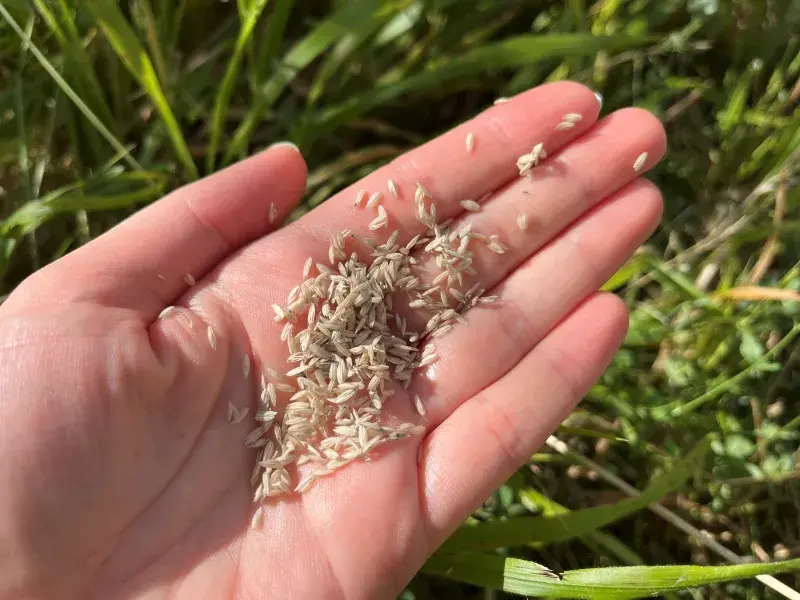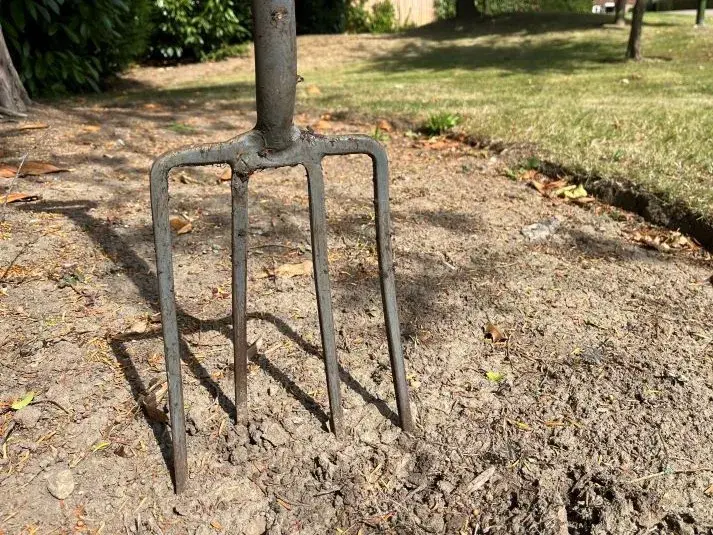
Add flower-rich grassland
Waves of long grass and wildflowers drifting in the breeze brings movement to your grounds, attracts an abundance of wildlife, and can have a calming effect for staff and learners.
This is one of the easiest ways to support and increase nature on your site.
Three ways to enhance grassy areas

1. Stop mowing
- The easiest option
- Allow existing grasses and other plants to grow tall
- Mow at the end of summer

2. Boost existing grassy areas by sowing seeds
- Scrape patches of existing turf or grass off
- Plant flowering grassland seeds, bulbs and plants
- Mow at the end of summer

3. Create new grassland
- Turn a grey area or other low-value habitat into grassland
- Prepare the ground before planting grassland seeds, bulbs and plants
- Mow at the end of summer
Measure and celebrate your impact
- Mapping your site before you change a habitat means you’ll be able to visualise and monitor the changes you’ve made.
- Study what insects you are currently hosting with the Pollinator Count survey before you enhance your grassland.
- Add your new area of long grass onto the Nature Park map using the Mapping Change tool. You can upload before and after photos and monitor the impact you are achieving for nature. Your new grassland will then be part of nationwide science research into nature recovery.
- Do the Pollinator Count again once you’ve grown your grass long, to see the incredible impact you’ve made.
Benefits for people and nature
Flower-rich grasslands support a wide range of plants and invertebrates, whilst also providing cover, food, and breeding spaces for birds and small mammals. Flower-rich grassy areas can be created alongside paths and playgrounds, giving young people daily close-up access to nature. The presence of colourful and diverse wildflowers has a positive impact on young people's mental wellbeing and their connection with the natural world. Creating grasslands is incredibly easy, low-cost and they are simple to look after.
Long grass is better at flood mitigation, captures pollution and is an important carbon store. Allowing grass to grow long also reduces some of the 80,000 tonnes of carbon dioxide emitted by petrol lawnmowers every year.
Common questions
- What time of year should I do this?
Grass should be left to grow long from April to August. Seed can be sown in Autumn or early Spring. - How long till I see changes?
This is a quick win – you'll see an increase in plants and invertebrates within a few months of stopping mowing. - What about weeds?
‘Weeds’ are part of the diversity of a grassland so leave them to grow if you can – many provide nectar-rich flowers or are the foodplant for caterpillars. However, if some are becoming too dominant, or are problematic in other ways e.g. too spiky right next to a path, you can remove them by hand. - Should we use any chemicals?
We do not recommend using chemicals to control either weeds or insects. Creating a diverse functioning habitat is the best way to achieve balance. Flower-rich grasslands grow best on poor quality soil, so no fertilisers are needed. - How do I get SLT, parents and maintenance staff on board?
Involve your learners in creating signs and other communications e.g. school newsletter articles to explain why the grass is being left to grow long. This also reminds grounds maintenance staff not to mow! Get creative in coming up with slogans e.g. “Please don’t mow – nature on the go!” Planting bulbs also discourages grounds staff from mowing and ensures these areas look great in early spring too. - How do I combine the grassland with learning and play?
If you have a fairly large area of grassland, consider mowing paths in interesting shapes through the middle, to allow young people to walk through and be safely immersed within it, without trampling the plants. Or create strips of grassland alongside paths, playgrounds and playing fields.
Curriculum links
This activity can be used to support curriculum knowledge and skill development in science, geography and citizenship, alongside enhancing nature education.
What to try next

Mapping changes to your site
Begin activity
Pollinator Count
Begin activity